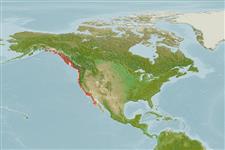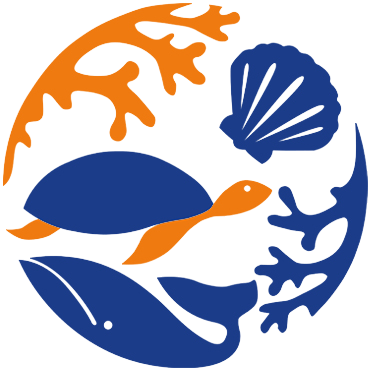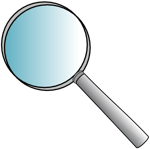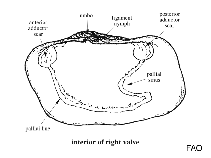Panopea generosa (Gould, 1850)
Pacific geoduck| Native range | All suitable habitat | Point map | Year 2050 |

|
| This map was computer-generated and has not yet been reviewed. |
| Panopea generosa AquaMaps Data sources: GBIF OBIS |
Upload your photos
Google image | No image available for this species;
drawing shows typical species in Hiatellidae.
Google image | No image available for this species;
drawing shows typical species in Hiatellidae.
Classification / Names Common names | Synonyms | CoL | ITIS | WoRMS
Bivalvia | Adapedonta | Hiatellidae
Environment: milieu / climate zone / depth range / distribution range Ecology
Benthic; depth range 0 - 110 m (Ref. 865). Temperate; 61°N - 26°N, 146°W - 112°W (Ref. 104413)
Distribution Countries | FAO areas | Ecosystems | Occurrences | Introductions
Eastern Pacific: From Alaska to Baja California. Subtropical to temperate.
Length at first maturity / Size / Weight / Age
Maturity: Lm ? range ? - ? cm Max length : 17.5 cm SHL male/unsexed; (Ref. 865); max. reported age: 100 years (Ref. 8702)
Maximum depth based on occurrence record (Ref. 105142); to be replaced with a better reference. It is found on sandy and muddy bottoms, in low intertidal areas to a depth of 15 meters (Ref. 865). Subtidal populations aggregate in dense beds to a depth of 110 m (Ref. 105142). Adults bury up to 1 m (Ref. 105154). Juveniles are preyed upon by fish, starfish, crabs, and snails (Ref. 105142).
Life cycle and mating behavior Maturity | Reproduction | Spawning | Eggs | Fecundity | Larvae
Members of the class Bivalvia are mostly gonochoric, some are protandric hermaphrodites. Life cycle: Embryos develop into free-swimming trocophore larvae, succeeded by the bivalve veliger, resembling a miniature clam.
Main reference
References | Coordinator | Collaborators
Pacific Northwest Shell Club. 2014. (Ref. 94906)
IUCN Red List Status (Ref. 130435)
CITES status (Ref. 108899)
Not Evaluated
CMS (Ref. 116361)
Not Evaluated
Threat to humans
Human uses
Fisheries: commercial
| FishSource |
Tools
More information
Internet sources
BHL | BOLD Systems | CISTI | DiscoverLife | FAO(Publication : search) | Fishipedia | GenBank (genome, nucleotide) | GloBI | Gomexsi | Google Books | Google Scholar | Google | PubMed | Tree of Life | Wikipedia (Go, Search) | Zoological Record
Estimates based on models
Preferred temperature
(Ref. 115969): 8.3 - 12.8, mean 9.8 (based on 80 cells).
Price category
(Ref. 80766):
Unknown.



